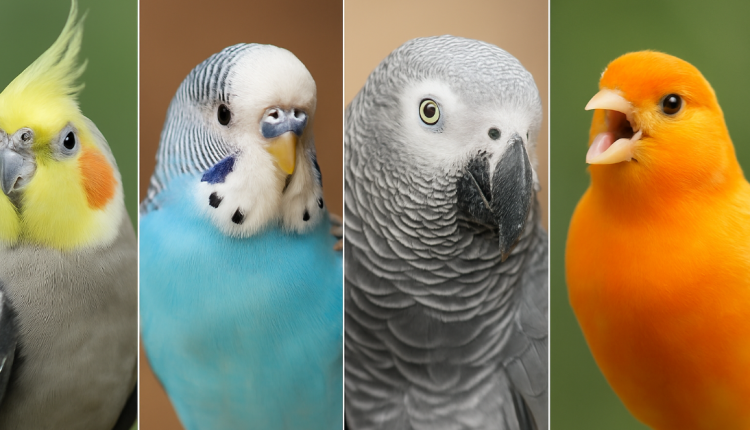The Hidden Language of Birds: Understanding Avian Communication in Pet Birds
Birds are among the most vocal and expressive pets one can own. From the cheerful chirping of canaries to the complex vocalizations of parrots, pet birds are constantly communicating. Yet many bird owners overlook or misunderstand the rich language their feathered companions use daily. While the mimicry of human speech in parrots is often celebrated, bird communication extends far beyond words—it involves postures, gestures, eye movement, feather position, and vocal tones. Understanding this language is essential for building a strong, trusting relationship with your avian pet.
Why Bird Communication Matters
Just like humans, birds use communication to express needs, emotions, and social cues. Ignoring or misreading their signals can lead to stress, behavioral issues, or even health problems. Birds that feel misunderstood may become withdrawn or aggressive, while those that feel heard and respected thrive.
Understanding your bird’s communication also helps:
- Identify early signs of illness or discomfort
- Strengthen your bond
- Reduce unwanted behaviors
- Improve training outcomes
Vocal Communication: More Than Just Noise
1. Contact Calls
These are the equivalent of a “Where are you?” shout. Birds use them to maintain flock cohesion. If your bird starts calling out when you leave the room, it’s not just seeking attention—it’s checking if you’re still nearby. Answering with a soft whistle or word can reassure them.
2. Chirping and Singing
Happy, content birds often chirp or sing, especially in the morning or when hearing music. These vocalizations vary by species but generally indicate good mood and comfort.
3. Screaming
While some noise is natural, repetitive, loud screaming often signals boredom, fear, or frustration. It may also be a learned behavior if the bird notices it leads to attention.
4. Imitating Human Speech
Parrots, mynahs, and a few other birds can mimic human language. However, it’s important to note they don’t always understand what they’re saying. They associate words with contexts, often using them to request or demand attention.
Body Language: The Unspoken Signals
Birds speak volumes without making a sound. Watching their posture and movement is just as important as listening to their calls.
1. Feathers Fluffed Up
This can indicate relaxation or warmth, especially if the bird is resting. But if a bird stays fluffed up for long periods and looks lethargic, it could signal illness.
2. Tail Bobbing
Mild bobbing during breathing is normal, especially after exercise. Constant tail bobbing, however, may indicate respiratory problems.
3. Eye Pinning
Parrots in particular may rapidly dilate and contract their pupils. This usually indicates excitement or heightened focus—either in a playful or aggressive context. It’s often seen before talking or mimicking.
4. Beak Grinding
When birds gently grind their beaks, usually at night, it’s a sign of contentment and relaxation.
5. Wing Stretching
Stretching one wing at a time is a normal routine behavior. But holding wings away from the body, panting, or drooping can indicate overheating or distress.
6. Head Bobbing
Seen often in young birds and parrots, it can be a sign of begging or excitement. In adult males, it can be part of mating behavior.
Social Cues and Emotional States
Birds are emotionally complex and their communication often reflects their feelings:
- Affection: Regurgitation is a bird’s way of showing love, often toward its favorite human or mirror. Though unappetizing, it’s a sign of deep affection.
- Aggression: Hissing, lunging, or biting are signs that a bird feels threatened or overstimulated.
- Fear: A bird frozen in place with wide eyes and flattened feathers is likely afraid. This often occurs in unfamiliar situations or environments.
- Curiosity: Birds tilt their heads and explore with their beaks when intrigued by a new object or sound.
Environmental Triggers and Their Influence
Bird communication doesn’t happen in a vacuum. Lighting, noise, cage location, and social interaction heavily influence a bird’s behavior and vocalizations.
- Sunlight and daylight cycles affect hormonal changes and breeding behaviors.
- Noise levels can cause overstimulation, especially in sensitive birds like cockatiels and African greys.
- Mirror or toy placement can cause obsessive behaviors or false bonding if not managed correctly.
Training Through Communication
Understanding your bird’s language is key to successful training. Use positive reinforcement when your bird expresses curiosity or comfort, and avoid punishment during fearful or aggressive states. Respecting their cues can dramatically improve learning and trust.
For example:
- If your bird pinpoints its eyes and raises feathers while approaching you, it might be excited—use this opportunity to engage.
- If it hisses or backs away, give it space and try again later.
- Reinforce good behavior with treats, words, or a favorite toy.
Encouraging Healthy Communication
To support your bird’s communicative development, consider the following:
- Talk to them regularly: Use consistent words for daily activities like feeding or bedtime.
- Provide auditory stimulation: Soft music, nature sounds, or even other bird calls can help.
- Avoid overstimulation: Watch for signs of stress and give them quiet time when needed.
- Rotate toys and perches: New stimuli help encourage curiosity and reduce boredom-based noise.
Conclusion
Pet birds have a remarkable ability to communicate, but their language is often subtle, nuanced, and species-specific. By learning to interpret their vocalizations, body language, and emotional cues, bird owners can greatly enhance their relationship with their avian companions. This not only ensures a happier bird but also creates a richer, more rewarding pet experience. Listening is just the beginning—understanding is the real key to bonding.

